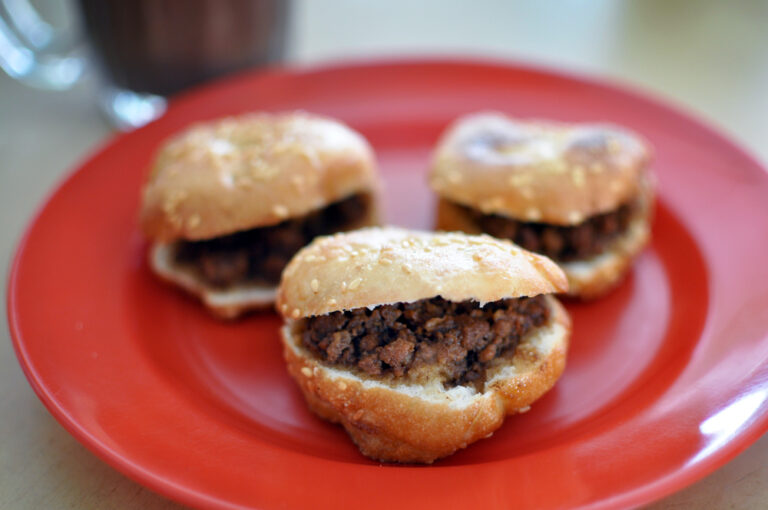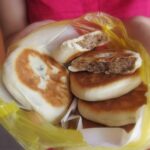Kompia: Iconic Bagels Found in Foochow Towns of Malaysia
Kompia, also known as 光饼 (Guang Bing), is a delightful bread reminiscent of a bagel that traces its roots back to Fuzhou, the capital city of Fujian Province in China. This unique bread has found its way to Malaysian towns where the Chinese community of Fuzhou (or Foochow/Hokchiu) ancestry thrives, such as Sibu, Sarikei, Sitiawan, and Yong Peng. Affectionately dubbed “Foochow bagels,” Kompia has become a beloved culinary gem in these regions.
Legend has it that Kompia was named after the renowned Qi Jiguang, who devised the bread. In 1563, when Qi Jiguang led his troops into Fujian, the Japanese pirates, fearing his reputation, resorted to guerrilla warfare tactics. Qi Jiguang astutely observed that the pirates could always track his soldiers’ encampments by the smoke rising from their meals. Curiously, the pirates faced no such challenge, as they carried onigiri (rice balls) with them. To address this vulnerability, Qi Jiguang ingeniously crafted a bread with a hole in the center, allowing the soldiers to string them together for convenient portability. When hunger struck, a soldier could simply detach a Kompia and savor it on the move. As a tribute to Qi Jiguang’s triumph over the pirate raiders, this bread was named Guang Bing, or “Guang cake.”
The original Guang Bing had a dry and robust texture, designed to endure the rigors of long journeys. However, the Kompia found in Malaysia has evolved to offer a softer and more palatable experience, as its durability is no longer a primary concern.
To create Kompia dough, wheat flour, baking soda, yeast, salt, and water are skillfully mixed and kneaded. The dough is then left to rise for two hours before being shaped into small balls. A rolling pin is used to flatten the dough, and a stick is inserted in the middle to create the distinctive hole. The Kompia dough is lightly sprayed with water and swiftly placed against the heated clay oven fueled by charcoal. This baking technique resembles the traditional cooking of Indian naans in a tandoori oven. The bread is then baked using the radiant heat from the charcoal at the oven’s base. It is believed that the introduction of clay ovens and this baking method can be attributed to Arab or Persian merchants who settled in Fuzhou during the 13th and 14th centuries. However, modernization has led to the use of conventional ovens for baking Kompia.
Kompia possesses a wonderful taste even on its own, especially when adorned with sesame seeds. Variations of Kompia can be found depending on the region. In Sitiawan and Yong Peng, Kompia is often stuffed with flavorful fillings before baking, such as lard and scallions, peanuts, BBQ pork, or sweetened grated coconut. On the other hand, in Sibu and Sarikei, plain Kompia is the norm and is commonly served with stewed pork mince. Some enthusiasts even enjoy it with spreads like jam, butter, and kaya.
Innovative sellers have embraced Kompia as a canvas for their creativity, introducing unique variations such as Kompia with donut icing, Kompia with rojak sauce, stir fried Kompia, and even Kompia cheeseburger. These imaginative adaptations highlight the versatility and adaptability of this beloved bread.
Kompia is a treasure that seamlessly blends traditions, cultures, and mouthwatering flavours. Whether enjoyed as a standalone treat or with delightful fillings, remember to treat yourself with some freshly baked Kompia during your visit to the Foochow towns in Malaysia.






1 Response
[…] Kompia: Iconic Bagels Found in Foochow Towns of Malaysia […]